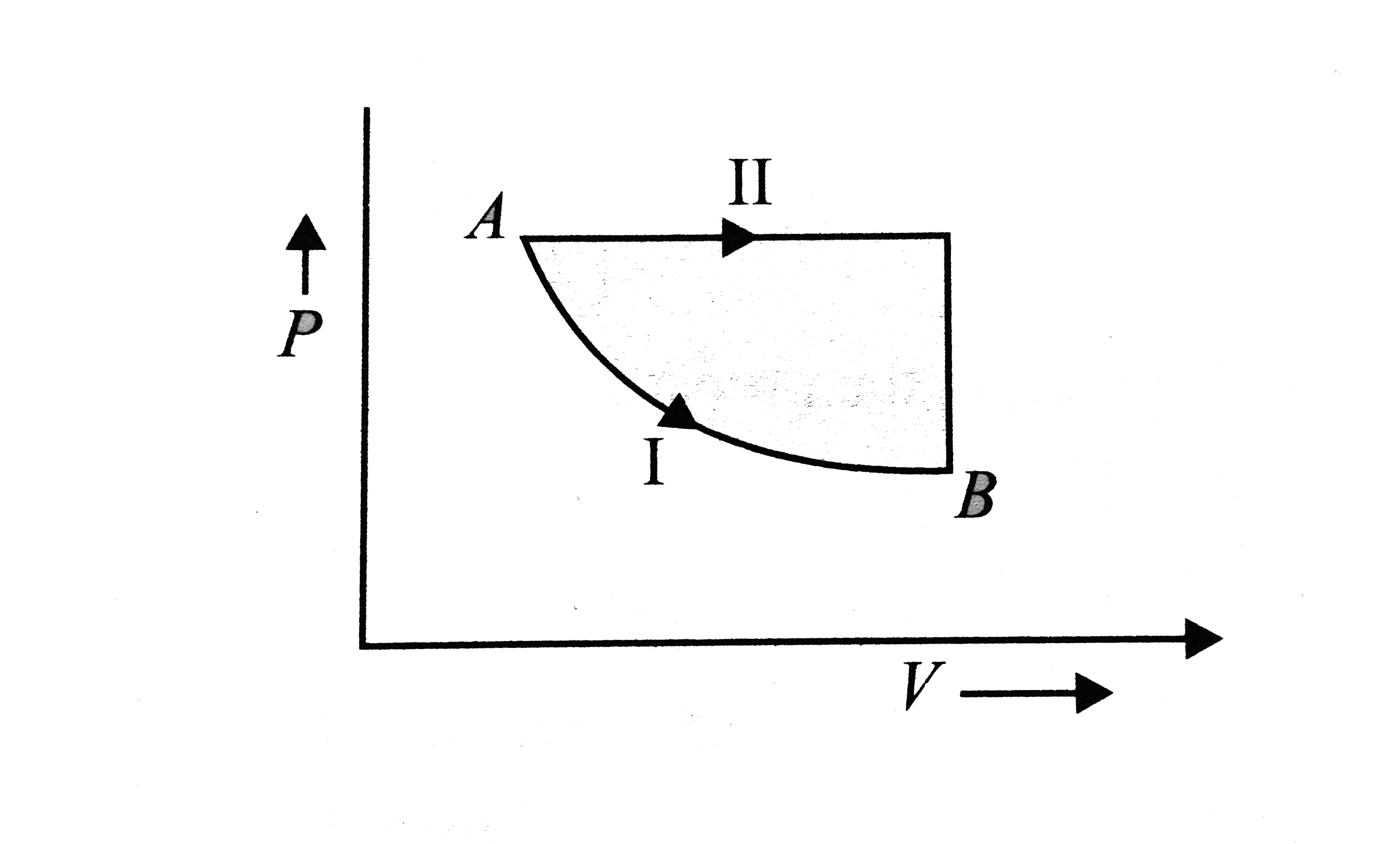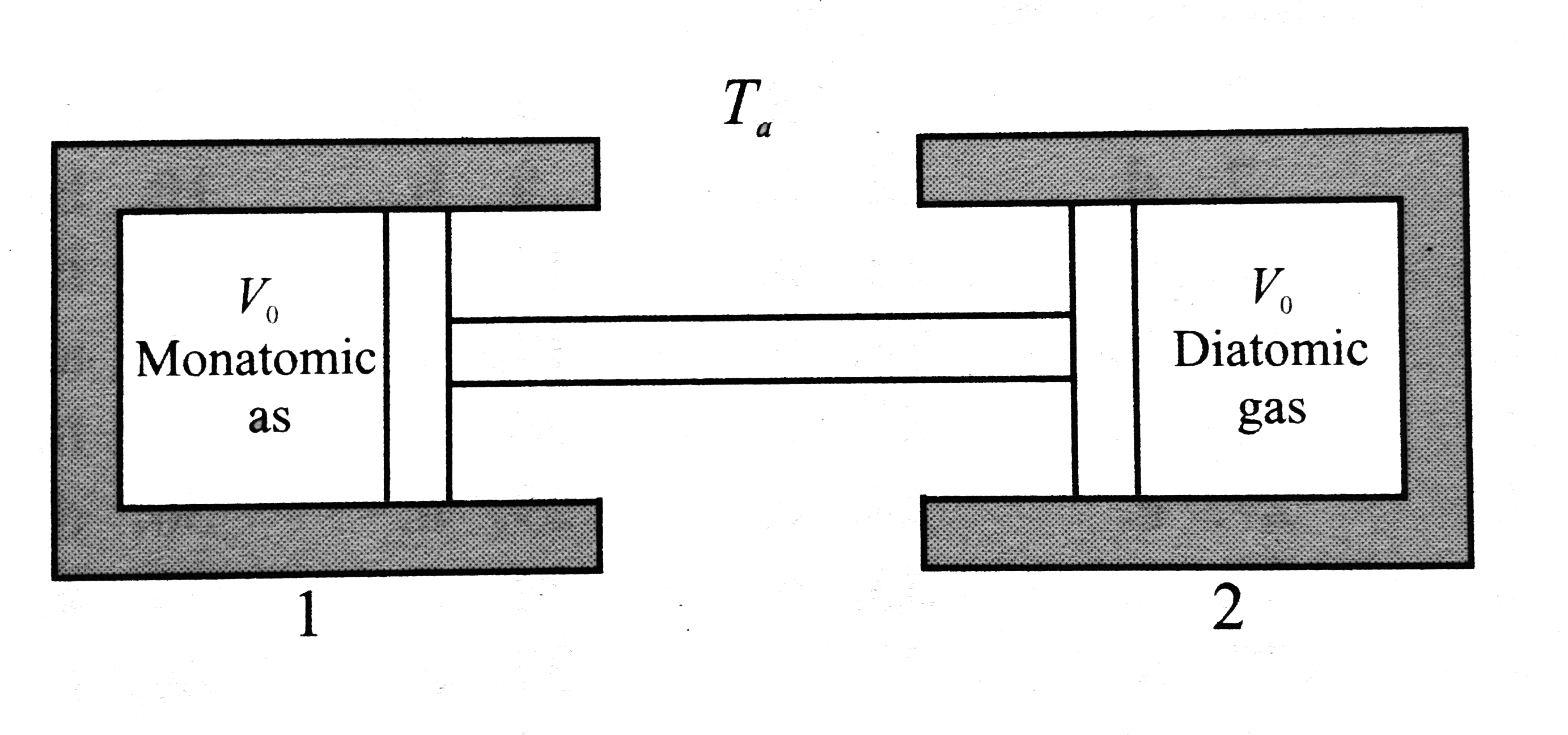Complete Solutions to Interger of chapter KINETIC THEORY OF GASES AND FIRST LAW OF THERMODYNAMICS of Class 11 book with complete answers and questions
| Class 11 | PHYSICS |
| Chapter | KINETIC THEORY OF GASES AND FIRST LAW OF THERMODYNAMICS |
| CENGAGE PHYSICS | Interger |
| Number Of Questions | 11 |
| Academic Year | 2023-24 |
8g of oxygen, 14 g of nitrogen and 22 g carbon dioxide are mixed in an encloser of volume 10 litre and temperature `27^(@)C`. Calculate the pressure exerted by the mixture , `R= 8.3 J "mole"^(-1)K^(-1)`, Molecular weight of oxygen , nitrogen and carbon 32 , 28 and 44 respectively.
View SolutionA vessel contains 1 mole of `O_2` gas (relative molar mass 32) at a temperature T. The pressure of the gas is P. An identical vessel containing one mole of He gas (relative molar mass 4) at temperature 2T has a pressure of
View SolutionP-V diagram of a diatomic gas is a straight line passing through origin. The molar heat capacity of the gas in the process will be
View SolutionA vessel contains a mixture of one mole of oxygen and two moles of nitrogen at 300K. The ratio of the average rotational kinetic energy per `O_2` molecules to that per `N_2` molecules is
View SolutionA vessel of volume `3V` contains a gas at pressure `4 P_(0)` and another vessel of volume `2V` contains same gas at pressure `1.5 P_(0)`. Both vessels have same temperature. When both vessels are connected by a tube of negligible volume, the equilibrium is `IP_(0)`, where `I` is an integer. Find the value of `I`.
View SolutionA vessel of volume `0.2 m^(3)` contains hydrogen gas at temperature 300 K and pressure 1 bar. Find the heat required to raise the temperature to 400 K. The molar heat capacity of hydrogen at constant volume is `5 cal//mol K`.
View SolutionA Vessel contains helium, which expands at constant pressure when 15 kJ of heat is supplied to it. What will be the variation of the internal energy of the gas? What is the work performed in the expansion?
View SolutionA certain mass of is taken from an initial thermodynamics state `A` to another state `B` by process I and II. In process I for the gas does `5 J` of work and absorbs `4 J` of heat energy. In process II, the gas absorbs `5 J` of heat. The work done by the gas in process II is

View SolutionThe two conducting cylinder-piston systems shows below are linked. Cylinder 1 is filled with a certain molar quantity of a monatomic ideal gas, and cylinder 2 is filled with an equal molar quantity of a diatomic ideal gas. The entire apparatus is situated inside an oven whose temperature is `T_(a) = 27^(@)C`. The cylinder volumes have the same initial value `V_(0) = 100 cc`. When the oven temperature is slowly raised to `T_(b) = 127^(@)C`. What is the volume change `Delta V` (in cc) of cylinder 1 ?

View SolutionA long container has air enclosed inside at room temperature and atmoshperic pressure `(10^(5) Pa)`. It has a volume of 20000 c c. The area of cross section is `100 cm^(2)` and force constant of spring is `k_("spring") = 1000 N//m`. We push the right piston isothermally and slowly till it reaches the origianl position of the left piston which is movalbe. Final length of air colume is found to be 25 h cm. Assume that spring is initially relaxed. Find `h`.
View SolutionThe value of `gamma = C_(P)//C_(V)` is `4//3` for an adaibatic process of an ideal gas for which internal energy `U = K + nPV`. Find the value of `n` (`K` is constant) :
View Solution
Interger questions and complete solutions for chapter KINETIC THEORY OF GASES AND FIRST LAW OF THERMODYNAMICS of CENGAGE PHYSICS (HINGLISH) of Class 11